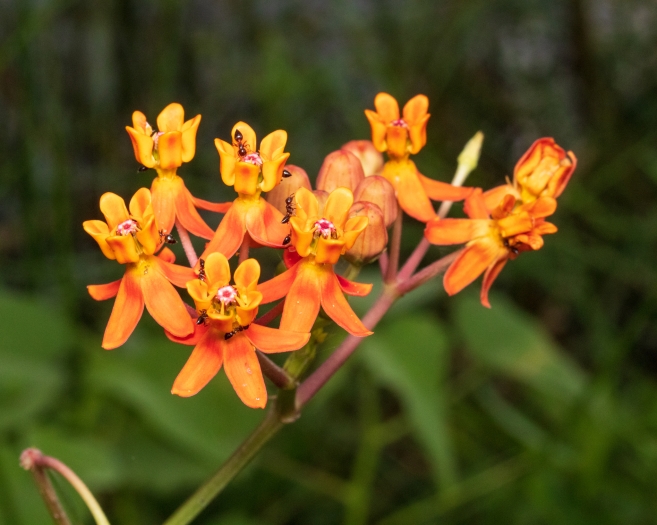Fewflower Milkweed
(Asclepias lanceolata)
Fewflower Milkweed (Asclepias lanceolata)
/
/

Joshua Liverman
CC BY 4.0
Image By:
Joshua Liverman
Recorded By:
Copyright:
CC BY 4.0
Copyright Notice:
Photo by: Joshua Liverman | License Type: CC BY 4.0 | License URL: http://creativecommons.org/licenses/by/4.0/ | Rights Holder: Joshua Liverman | Publisher: iNaturalist | Date Created: 2020-08-08T04:40:29-07:00 |























Estimated Native Range
Summary
Asclepias lanceolata, commonly known as Fewflower Milkweed, is a perennial herb that thrives in the coastal plains of the Southeastern United States, from New Jersey to Florida and Southeast Texas. It typically grows between 3 and 5 feet tall and is characterized by its narrow leaves and clusters of red-orange flowers that bloom in the summer. The flowers are moderately showy and attract a variety of pollinators. Fewflower Milkweed is particularly adapted to wet, sandy soils and is often found in marshes, wet prairies, and wet pine barrens, where it contributes to the biodiversity of these ecosystems.
This species is valued for its role in supporting pollinators, especially monarch, queen, and soldier butterflies. It provides essential nectar for adult butterflies and serves as a crucial host plant for their larvae. Fewflower Milkweed is suitable for naturalistic plantings and restoration projects, particularly in wetland areas. It requires full sun to part shade and prefers moist to wet, well-drained sandy soils. While it is not commonly used in traditional garden settings, it is an excellent choice for wildlife gardens and native plant landscapes. Care should be taken when handling as the sap can be irritating to the skin. Fewflower Milkweed is not known for being invasive, but it can spread through its seeds and rhizomes if conditions are favorable.CC BY-SA 4.0
This species is valued for its role in supporting pollinators, especially monarch, queen, and soldier butterflies. It provides essential nectar for adult butterflies and serves as a crucial host plant for their larvae. Fewflower Milkweed is suitable for naturalistic plantings and restoration projects, particularly in wetland areas. It requires full sun to part shade and prefers moist to wet, well-drained sandy soils. While it is not commonly used in traditional garden settings, it is an excellent choice for wildlife gardens and native plant landscapes. Care should be taken when handling as the sap can be irritating to the skin. Fewflower Milkweed is not known for being invasive, but it can spread through its seeds and rhizomes if conditions are favorable.CC BY-SA 4.0
Plant Description
- Plant Type: Herb
- Height: 3-5 feet
- Width: 0.1-1 feet
- Growth Rate: Moderate
- Flower Color: Orange, Red, Yellow
- Flowering Season: Spring, Summer
- Leaf Retention: Deciduous
Growth Requirements
- Sun: Full Sun
- Water: Medium, High
- Drainage: Fast, Medium, Slow
Common Uses
Butterfly Garden, Deer Resistant, Erosion Control, Low Maintenance, Water Garden
Natural Habitat
Coastal plains, marshes, wet prairies, and wet pine barrens
Other Names
Common Names: Red Milkweed, Lanceleaf Milkweed
Scientific Names: , Asclepias lanceolata, Asclepias lanceolata f. flaviflora, Asclepias lanceolata f. lanceolata, Asclepias lanceolata var. lanceolata, Asclepias lanceolata var. paupercula, Asclepias paupercula, Asclepias serpentaria, Otanema lanceolata,
GBIF Accepted Name: